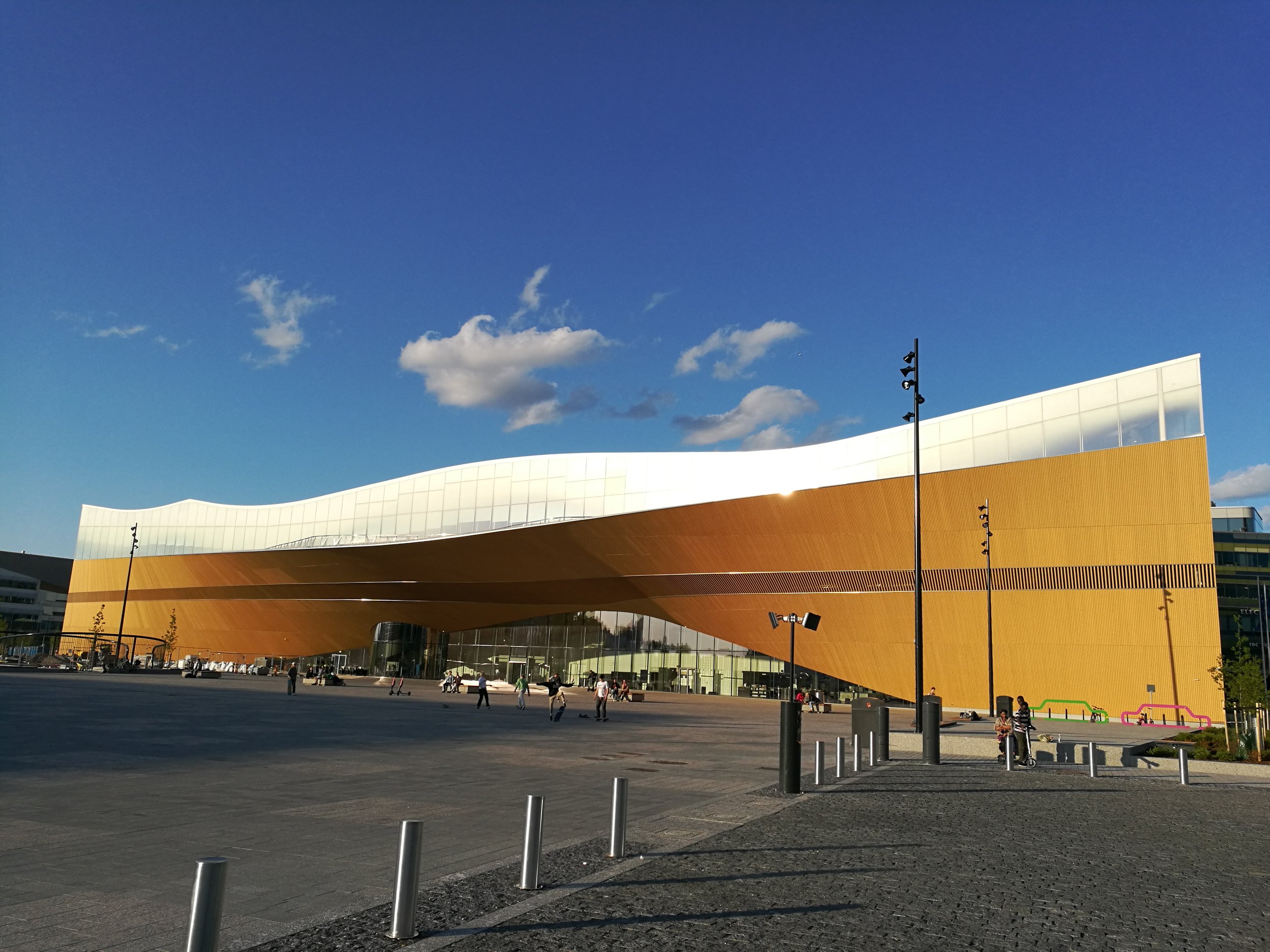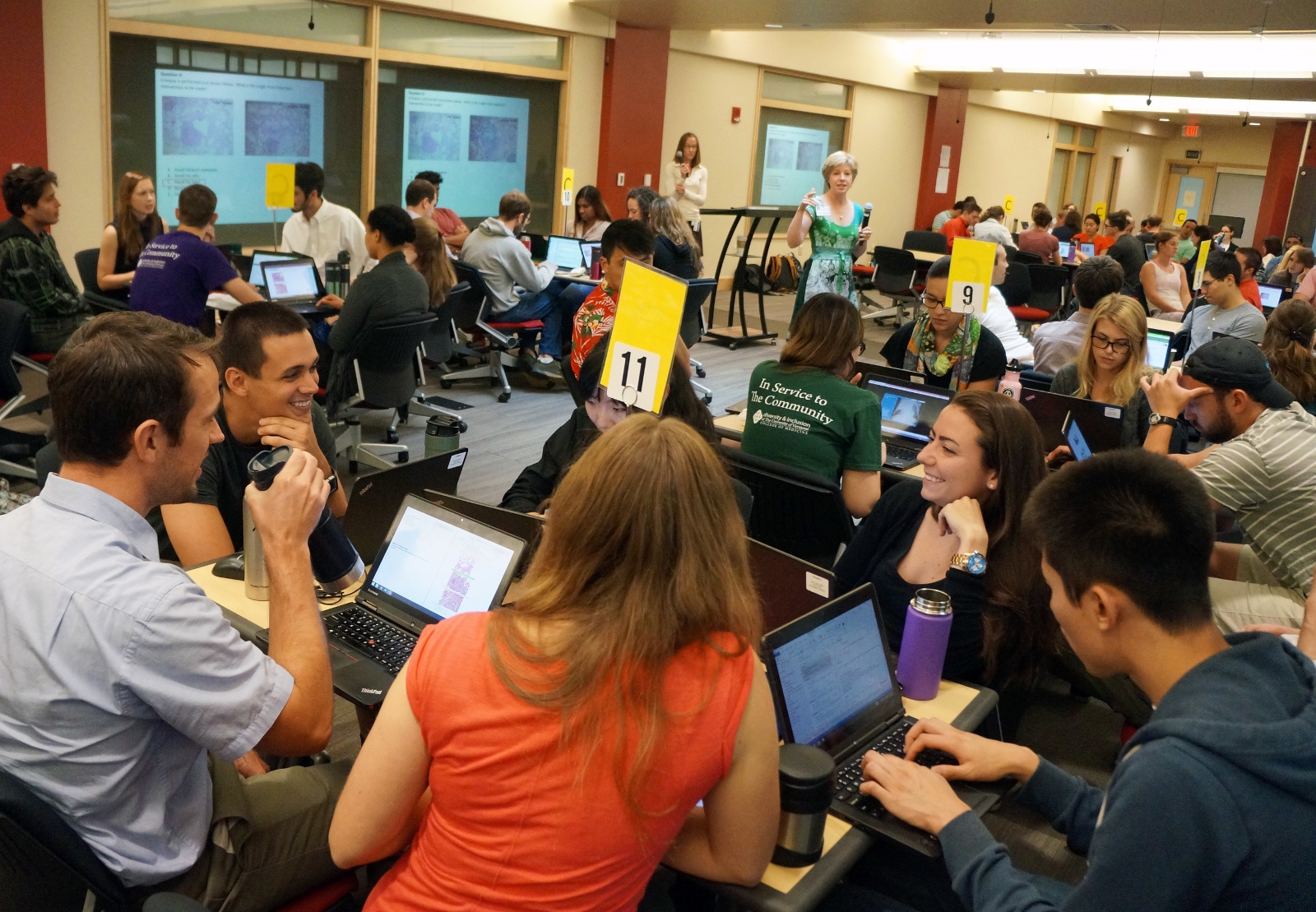These are some activities to develop creativity and critical thinking with flipped learning in biomedicine students.
The challenges of the 21st-century require future professionals who can deal with the complex problems that frequently crop up in multidisciplinary groups. To achieve this, key competencies such as creativity and critical thinking should be fostered during their education. This article proposes a series of activities for working on these competencies in higher education using the flipped classroom methodology.
Diverse studies explore the role of university professors in the development of creative skills and critical thinking (Ma, 2006; Scott et al. 2004; Dehaan, 2009). In this context, active learning methods are more effective in promoting creativity than traditional teaching methods (Waldrop, 2015; Barrow, 2010). One of these methods is the flipped classroom, which emerged from redefining the role played by educators in the teaching-learning process and offers flexibility in learning spaces.
“Creativity and critical thinking are essential competencies to face complex problems in multidisciplinary workgroups.”
This proposal uses blended methods, where knowledge is transferred through virtual resources and face-to-face lessons are used to carry out interactive activities, such as problem-solving or role play, to consolidate knowledge. In this model, students acquire an active role during their learning process, while the educator is responsible for encouraging students to direct their learning and develop competencies such as critical thinking and creativity (Khanova et al., 2015).
Developing creativity and critical-thinking competencies form an essential part of preparing future professionals in STEM (science, technology, engineering, and mathematics) areas. Some studies show that the capacity to create and produce value innovations can be fostered through a variety of activities, based on complex problem solving, inquiry and interdisciplinarity, among others.
“Class time is better used with flipped learning to carry out interactive activities that consolidate knowledge.”
At present, creativity is considered to be the interaction between aptitude, process and environment, in which an individual or a group of people produce a novel, useful product within a social context (Plucker et al., 2004). This competency is essential in diverse fields. For example, scientific knowledge is a direct product of creative thinking (Beghetto et al., 2013). In turn, critical thinking is associated with the processes of analyzing, synthesizing and evaluating different sources of information based on observation, reasoning and reflection, which are considered a part of creative thinking. Therefore, critical thinking has an analytical and evaluative purpose, while creative thinking has a generative purpose (Papathanasiou et al., 2014).
The “Creaflip” project, implemented jointly by several teachers, seeks to replace part of the lectures with flipped classroom activities that favor the development of creativity and critical thinking. To this end, teachers set the specific objectives of designing, implementing and evaluating a series of activities in three different courses from the degrees in Human Biology and Medicine at Pompeu Fabra University, and of collecting information on student satisfaction and the development of creativity and critical thinking competencies. The project included six flipped-classroom exercises which involved preparing different pre-class materials and designing and subsequently evaluating the in-class activity. All the activities were created using different collaborative learning strategies and techniques, as can be seen in table 1.
Table 1. Flipped classroom activities implemented in class
The project objectives and materials were evaluated by collecting different pieces of evidence through in-class observation, satisfaction surveys on the activities and comments by the students who participated in the project. The results obtained show a high level of student satisfaction with the flipped classroom methodology (table 2), reflected in overall satisfaction with the activities of 4.15 out of 5. An analysis of the students’ comments also reveals their sense of having developed creativity and critical thinking competencies.
Table 2. Student satisfaction with the flipped classroom methodology
Even though the results obtained in all the experiences were highly satisfactory, the project evaluation allowed us to identify aspects of the flipped classroom implementation that could be improved and to develop strategies to optimize the activities. They included regulating the student workload and being more explicit about the relevant competency evaluation methods.
These results show that the active methodologies applied are highly suitable for developing critical thinking and creativity competencies, thereby favoring student learning. Consequently, there are plans to coordinate the expansion of this type of activities across all Human Biology and Medicine courses, thus assuring a balanced student workload.
Active methodologies, such as flipped classroom, make it possible to work on competencies that are essential for future biomedical science professionals and are an excellent alternative to lectures.
We invite educators to share with the Observatory the different strategies they have used to introduce active methodologies in the classroom.
About the authors
Mar Carrió (ma.carrio@upf.edu), Elisabeth Moyano (elisabeth.moyano@upf.edu) and Nora Pérez (nora.perez@upf.edu) are professors of the department of experimental sciences and health at Pompeu Fabra University. They are also part of the educational research team in health sciences (GRECS) with Gemma Rodríguez (gemma.rodriguez@upf.edu) and Raúl Sánchez (raul.sanchez@upf.edu).
References
Barrow, L. (2010). Encouraging Creativity with Scientific Inquiry. Creative Education, 1, 1–6.
Beghetto, R., & Kaufman, J. (2013). Fundamentals of creativity. Educational Leadership, 70(5), 10–15.
Dehaan, R. L. (2009). Teaching Creativity and Inventive Problem-Solving in Science. CBE-Life Sciences EducationLife Sciences.
Khanova, J., Roth, M. T., Rodgers, J. E., & Mclaughlin, J. E. (2015). Student experiences across multiple flipped courses in a single curriculum. Medical Education, 49(10), 1038–1048.
Ma, H. H. (2006). A synthetic analysis of the effectiveness of single components and packages in creativity training programs. Creativity Research Journal, 18(4), 435–446.
Papathanasiou, I. V., Kleisiaris, C. F., Fradelos, E. C., Kakou, K., & Kourkouta, L. (2014). Critical thinking: The development of an essential skill for nursing students. Acta Informatica Medica, 22(4), 283–286.
Plucker, J. A., Beghetto, R. A., & Dow, G. T. (2004). Why Isn’t Creativity More Important to Educational Psychologists? Potentials, Pitfalls, and Future Directions in Creativity Research. Educational Psychologist, 39(2), 83–96.
Scott, G., Leritz, L. E., & Mumford, M. D. (2004). Types of creativity training: Approaches and their effectiveness. Journal of Creative Behavior, 38(3), 149–179.
Waldrop, M. M. (2015). the Science of Unethical To Teach. Nature, 523, 272–274.
This article from Observatory of the Institute for the Future of Education may be shared under the terms of the license CC BY-NC-SA 4.0 
)
)









)
Rubí Román
Rubí Román
Rubí Román